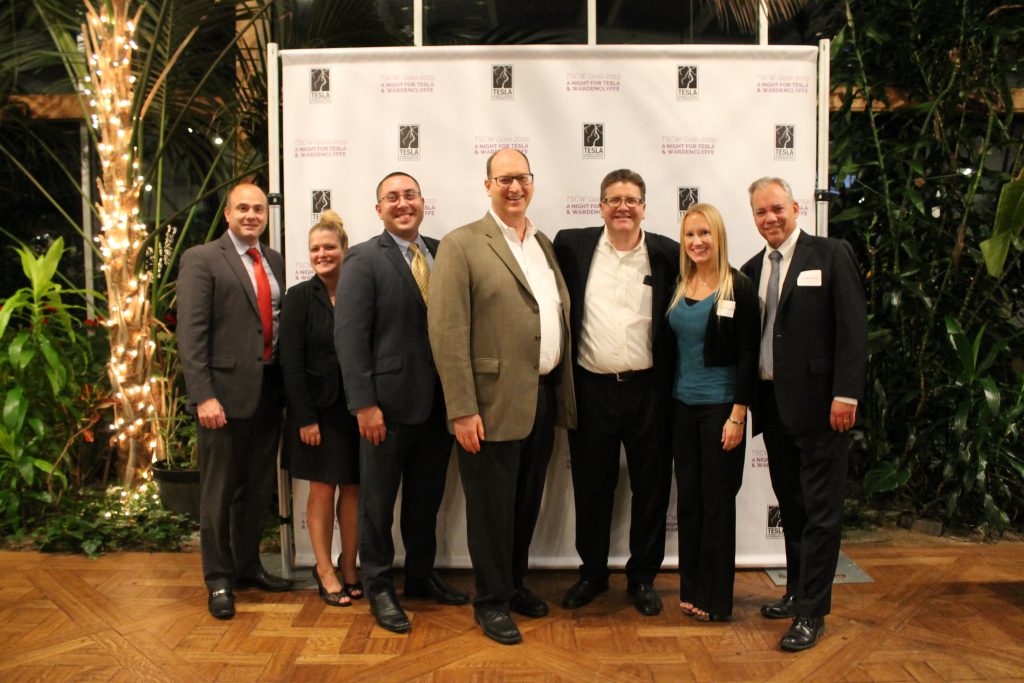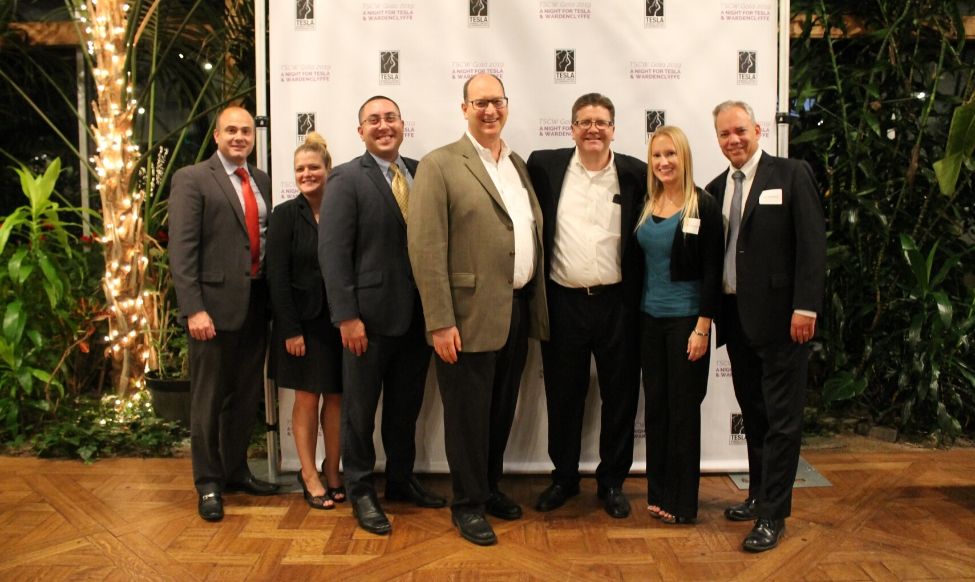HIA-LI 25th Annual Business Achievement Awards: Tradable Businesses in the Long Island Innovation Park at Hauppauge
Joe Campolo delivered these remarks at HIA-LI’s 25th Annual Business Achievement Awards, following remarks by New York Lieutenant Governor Kathy Hochul.
Thank you all for joining us here today. We are all here to celebrate the best and the
brightest that Long Island has to offer, a distinction that becomes even more
remarkable when you realize what a powerful economic engine Long Island
is.
According to a May 2019 report from the Office of the New
York State Comptroller, Long Island is home to 2.8 million people. Between 2009
and the end of 2018, we added 115,400 jobs, to reach a record number of 1.3
million jobs. The unemployment rate on Long Island during that period fell from
7.5% in 2010 to currently 3.7%. With all those jobs, Long Island boasts the
second highest average wage in the state (the highest is Manhattan) of just
over $60,000 per worker. The median household income was $105,000 for Nassau
County, and $93,000 for Suffolk – much higher than the state median of $62,000
for household income. On Long Island the home ownership rate is 72%, compared
with 48% for the rest of the state. And the value of our homes averages $460,000
for Nassau and $379,000 for Suffolk, which is significantly higher than the state
median of $293,000. Understanding this
helps us realize the tremendous accomplishment of these companies being
recognized today, and I ask that we give a round of applause to celebrate all
the winners and finalists for helping all Long Islanders achieve this
prosperity.
I would also be remiss if I didn’t recognize our host of
this great event, our beloved HIA-LI, for its critical role in helping shape
this great Island’s powerhouse economy. For 41 years the HIA-LI and its staff,
board members, and committee volunteers have been a fierce advocate for all
Long Island’s businesses and has served as a steward and protector of our great
Park. So could we please give Terri, her amazing staff, our incredible board
members, and committee volunteers another round of applause.
Renamed this year as the Long Island Innovation Park at
Hauppauge, our Park contains almost 1,400 amazing businesses, which provide
jobs to one in 20 Long Islanders. The economic output of the Park over the past
few years has been well documented and discussed, as has the fact that it is
the second largest industrial park in the country, the first being Silicon
Valley. These facts attracted the interest of our great friends at the Suffolk
IDA who, along with the RPA, commissioned an Opportunity Analysis to do a
deeper dive into the businesses that reside in the Park and come up with
initiatives to further anchor the Park to Long Island’s revitalized economy. In
April of this year, after an almost year-long process, the IDA released the
more than 160-page report, and the conclusions were staggering – in addition to
verifying the prior economic analysis that had been conducted on the Park, this
report also found that the Park has the largest concentration of tradable
businesses not only on Long Island, but also is a full 20% above the national
average for tradable business clusters.
Now, if you’re like me, you may not immediately realize
why this is so monumental a statistic. Prior to this report I had not ever
understood or focused on what a tradable business was. It turns out, however,
that to a region’s economy it is a very big deal, and so we should all
understand its significance. You see, every ecosystem must include non-tradable
businesses – these are the things that directly support the personal needs of the
neighborhood in which the business is located and its citizens. Thus, every
community will have barbers, gas stations, delis, laundromats, 7-11s, etc. And
while these businesses play an important role, they typically employ local people
who do not require enhanced skills and who on average receive lower wages. These
businesses are also fully dependent on the immediate residents of that location
to consume their goods or services; there is simply not a synergy of either
workers or customers who are going to commute a great deal for them.
High performing ecosystems, however, will also include a
mix of tradable businesses, which are the businesses that are not dependent on
customers from their immediate neighborhoods to thrive – these industries
include things like aerospace, biopharma, manufacturing, IT, and others who
have chosen to be there for reasons other than direct access to customers. These
businesses enhance any community they are in because they vastly increase the
local tax base by paying higher wages, which not only helps the government but
also greatly stimulates the local non-tradable economy – in fact, this was the
tragic effect when Amazon chose not to relocate to Long Island City. It not
only hurt the government’s pocket, but also the local non-tradable economy by
not allowing newly high-paid consumers to be located there. Tradable industries
also attract skilled works to relocate here from other states and
municipalities, which also greatly helps grow our tax base without having to
continue to raise taxes. An ecosystem with too few tradable ones suffers
greatly because it finds itself simply recirculating dollars rather than
growing the pie – an economy with no tradable businesses will collapse, as we
saw with Detroit and Flint, Michigan.
Thus, it is imperative for sustained prosperity to
cultivate and grow the number of tradable businesses in any region, causing us
to look at why some areas are better than others at attracting and retaining
these businesses. And as I mentioned
earlier, the recent study has shown that while the national average for tradable
business clusters is 38%, that percentage is much higher – 58% – in the Park. Having realized this staggering disparity, a
large part of the investigation into the report focused on the “why” – why is
this little 11-square-mile tract of land in the middle of Long Island such a
hotbed for tradable industries, and the answer, almost uniformly, was that it
was due to the ability for those businesses to have access to a highly skilled
workforce.
Understanding all that, we now know how critical to Long
Island it is to maintain, if not grow, this high percentage of tradable
business in the Park, for to lose them would be catastrophic. Unlike non-tradable
businesses, tradable businesses are our only way to attract and keep the recent
grads of our own educational organizations, who are all too often lured away by
the glitz of NYC or Silicon Valley. This is the key, as these jobs will pay
them adequate wages so they can buy our homes, afford the taxes and enjoy the
higher-end amenities Long Island is known for. Thus, the Opportunity Analysis
set forth a very detailed action plan of ways for all stakeholders – private
business, government, education, and the HIA-LI – to partner together to make
sure that we keep this vitality alive in our Park and on Long Island.
I am proud to report that immediately following the Opportunity
Analysis, the HIA-LI commissioned a Task Force comprised of Board members who
are leaders in their respective fields to ensure that this critical initiative
moves forward. As is typical with the HIA-LI, we have fully embraced this, have
rolled up our sleeves, and are getting things done. Most recently, the action
item of exploring the possibility of a workforce development center to be
created in the park was presented to the Long Island Regional Planning Council,
which, after testimony, declared this project one of regional significance and
issued a grant to further develop the workforce initiative. We are very
thankful for that support, and that initiative is moving forward as we speak.
We are also working very hard to move forward other
initiatives the report identified as critical, such as a greenway connection
throughout the park, creating innovation nodes, and enhancing work-life
culture. And while this is long and daunting road, our resolve is fierce and
our efforts are relentless to move this initiative forward, as we all simply
have too much riding on it.
In closing, I would like to say that in addition to the amazing businesses that we have here, none of this would be possible if it were not for the support, cooperation and partnership with our elected officials. During this process I have learned that not only is Long Island a national treasure, but we are a national model for how business and government should partner, and how bipartisan cooperation and support, rather than cheap tweets or insults, is how we on Long Island operate and get things done. During this entire process there has been nothing but interest in helping on all levels, particularly from the Towns of Smithtown and Islip and the County of Suffolk. Never once did I hear any political issue or ramification be discussed – only a true desire to help make our economy as robust as possible. In today’s world, this is a huge accomplishment and something we as Long Islanders should all be aware of and proud of.












